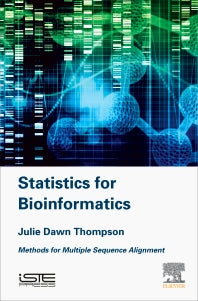Freshly Printed - allow 10 days lead
Couldn't load pickup availability
Statistics for Bioinformatics
Methods for Multiple Sequence Alignment
This reference reviews the methods for constructing and analyzing multiple sequence alignments—one of the cornerstones of bioinformatics
Julie Thompson (Author)
9781785482168, Elsevier Science
Hardback, published 23 November 2016
146 pages
22.9 x 15.1 x 1.8 cm, 0.28 kg
Statistics for Bioinformatics: Methods for Multiple Sequence Alignment provides an in-depth introduction to the most widely used methods and software in the bioinformatics field. With the ever increasing flood of sequence information from genome sequencing projects, multiple sequence alignment has become one of the cornerstones of bioinformatics. Multiple sequence alignments are crucial for genome annotation, as well as the subsequent structural, functional, and evolutionary studies of genes and gene products. Consequently, there has been renewed interest in the development of novel multiple sequence alignment algorithms and more efficient programs.
PART I: Fundamental concepts 1. Introduction 2. Multiple sequence applications
PART II: Traditional multiple sequence alignment methods 3. Heuristic approaches 4. Statistical approaches 5. Objective functions 6. Alignment benchmarks
PART III: Large-scale multiple sequence alignment methods 1. Efficient methods for multiple alignment of complete genome sequences 2. Efficient methods for multiple alignment of 1,000’s of sequences 3. HPC implementations 4. Alignment quality analysis
Subject Areas: Medical bioinformatics [MBF]


